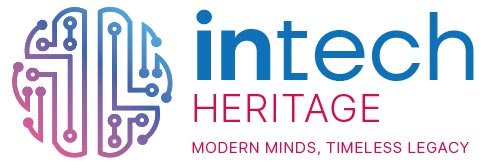In the era of modern technology, microservices have revolutionized software architecture, allowing for greater agility and scalability. However, when a microservice fails, it can significantly impact the operation of the entire system. Here is a detailed guide on how to effectively diagnose and resolve microservices failures in cloud environments, incorporating artificial intelligence to improve the efficiency and accuracy of the process.
Monitoring and Alerts with AI Review alerts issued by monitoring tools (Prometheus, Grafana, AWS CloudWatch, etc.) to get initial clues about the nature of the failure. Use AI algorithms to analyze patterns in alerts and predict potential future failures. Tools like Dynatrace and Datadog use AI to correlate events and detect anomalies before they cause serious problems. These tools can provide predictive analytics and proactive alerts, allowing DevOps teams to act before issues impact the system.
Automated Log Review Implement AI tools to analyze startup and error logs for error messages, unhandled exceptions, or stack traces. Examples of such tools are ELK Stack (Elasticsearch, Logstash, Kibana) with integrated Machine Learning, and Splunk, which use AI to quickly identify patterns and anomalies. These tools can correlate events and provide actionable insights that might be overlooked by humans.
System Health with AI Use health endpoints (such as /actuator/health in Spring Boot) to verify the state of the microservice. Integrate AI to continuously analyze this data and detect deviations that could indicate an imminent problem. Tools like New Relic and AppDynamics use AI to monitor system health in real-time, providing automatic diagnostics and recommendations to maintain optimal system performance.
Resources and Configuration Review CPU, memory, I/O usage, and other metrics to ensure the microservice has not exhausted available resources. Use AI to optimize resource allocation and predict future needs. For example, AWS Auto Scaling with AI can automatically adjust resources according to demand, ensuring microservices have the necessary resources without manual intervention.
Deployment and Scalability If there has been a recent deployment, review code changes and deployment scripts. Implement CI/CD (Continuous Integration/Continuous Deployment) with AI tools like GitHub Copilot and Jenkins X to automate testing and ensure auto-scaling policies are correctly configured and functioning. These tools can suggest code improvements and automate deployment processes, reducing the risk of human errors.
Integration and Unit Testing Run unit and integration tests to verify if the problem can be replicated in a controlled environment. Use AI to generate additional test cases and optimize existing tests. Tools like Test.ai and Applitools use AI to create and run tests more efficiently, detecting issues that might not be captured by traditional testing.
Networking Check network connectivity between the failed microservice and its dependencies, and between the microservice and the load balancer. Implement AI solutions to monitor and optimize the network in real-time. Tools like ThousandEyes and Kentik use AI to provide deep visibility and analysis of the network, quickly identifying and resolving connectivity issues.
Code Review If logs and metrics do not clearly indicate the problem, conduct a code review to look for potential logical errors, concurrency issues, etc. Use AI-based code analysis tools like SonarQube and DeepCode to detect potential problems more quickly. These tools can suggest refactorings and optimizations based on industry best practices.
Communication and Documentation Inform the development and operations team about the incident and the steps being taken to resolve it. Document all findings and steps taken to resolve the problem, using AI tools to automate and improve the accuracy of documentation. Tools like Atlassian Confluence with integrated AI can help generate and organize documentation efficiently, ensuring all relevant information is available to the team.
Solution and Prevention Apply the necessary changes to restore the service. Implement long-term solutions to prevent the issue from recurring, such as improvements in monitoring, code refactoring, resource optimization, etc. Use AI to design and evaluate preventive solutions, as well as to predict and mitigate future problems. Platforms like IBM Watson and Google AI can provide insights and recommendations based on historical data analysis and usage patterns.
Conclusion
Resolving microservices issues requires a structured and meticulous approach. By incorporating artificial intelligence into these steps, you can ensure a quicker and more effective recovery, as well as implement more robust preventive measures to improve the resilience of your system. The key lies in constant monitoring, detailed log review, resource and configuration verification, and effective team communication, all powered by AI.

